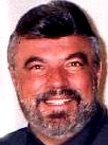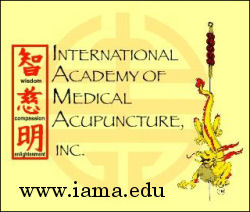Acupuncture & TCM Articles

Acupuncture Articles
by John A. Amaro L.Ac., Dipl.Ac.(NCCAOM), DC
 Dr. Amaro is an internationally known author, lecturer and practitioner beginning his practice of Acupuncture and Chiropractic in 1971. He has led 13 diplomatic Acupuncture study tours of The People's Republic of China escorting more than 500 doctors and practitioners. He has personally studied Acupuncture in nine separate Asian nations. Dr. Amaro is an internationally known author, lecturer and practitioner beginning his practice of Acupuncture and Chiropractic in 1971. He has led 13 diplomatic Acupuncture study tours of The People's Republic of China escorting more than 500 doctors and practitioners. He has personally studied Acupuncture in nine separate Asian nations.
He has received Certification in Acupuncture through the Columbia Institute of Chiropractic in 1973. This was one of the first Acupuncture postgraduate education programs for physicians in North America commencing in 1972.
He has been certified by the Waseda Acupuncture College in Tokyo, Japan in 1974 and graduated from the Chinese Medical Institute, Kowloon, China in 1976. He had previously taken postgraduate studies at the Tai Chung Medical School Taipei, China 1973.
"What points do you use for_____"
John A. Amaro L.Ac., Dipl.Ac.(NCCAOM), DC
Without hesitation the number one question poised of me by doctors interested in the application of acupuncture and which has been consistent for more than a quarter of a century is simply, "What points do you use for_________".
Of course this simplified approach to what many practitioners feel is the practice of acupuncture, is in reality a far cry from proper applications that deal with a host of theoretical and procedural process both ancient and modern.
Even though this article will be read in every corner of the globe, I speak especially to my American brethren who having been born Americans, feel we have the birthright to change ancient rules at will. As a nation, we Americans seem to have a way of minimizing everything to meet our way of life. We tend to make things easier and less complicated sometimes disregarding the how's, why's and historical significance of matters of importance. However, as the world becomes much smaller, it appears this is quickly becoming a global trend.
Many health care practitioners who "dabble" with acupuncture thru simple stimulation of patterns of acupuncture points, often find themselves very frustrated when they achieve outstanding results on one patient and no response on the next two. This is usually attributed to the fact many practitioners commonly use only formulae or "cookbook" approaches even though acceptable are not specific for the individual patient.
In every sport, occupation or profession, many will become very involved and considered good at what they do however, few ever reach the pinnacle of fame, fortune and success in that particular endeavor. There are always in every field only a few who stand out above mediocrity.
In the field of acupuncture, it behooves the practitioner to understand the reasoning behind the specific points on the meridian system and how and why they are used in a clinical practice. As opposed to the simple "what points do you use for______". The medical/chiropractic professional in order to practice proper acupuncture needs an understanding of the principles of acupuncture, along with scientific correspondences and knowledge of special reflex areas that are essential to its successful practice.
Acupuncture does not have to involve the myriad of myth, shamanism and folklore that abounds in many of the ancient principles of Traditional Chinese Medicine (TCM). In actuality, TCM is just one method of a large multi national system which includes, Japan, Korea, Taiwan, South East Asia, Malaysia, not to mention every country in Europe which have used acupuncture extensively for centuries. European applications have demystified many of acupuncture's explanations that are more compatible with Western scientific thought processes.
Given all of that, practitioners will continue to ask, "What points are good for___". In Richard Cheng's M.D., Ph.D. book "The Science of Acupuncture Therapy", many of these orthopedic/neurologic basic points and formulae's are discussed. These points have been found to be very effective in the majority of cases based on neurologic explanations rather than TCM thought processes.
Dr. Cheng a personal friend of mine and faculty member of the International Academy of Medical Acupuncture is a neurophysiologist, internationally recognized researcher and M.D. He was one of the principle researchers in the discovery of endorphins and enkephalins at the University of Toronto. His work has been published in numerous prestigious scientific journals that earned him the first Ph.D. in acupuncture research in North America. Following are specific points Dr. Chengs neurologic research has shown to be extremely effective in pain control.
The following points will only be listed by number as opposed to illustrated (Dr. Cheng's book is illustrated). Should you not know the location of these powerful points, bring out your acupuncture chart or mannequin and begin your review. These are far too powerful for you not to use. I have personally used them for years. The following represent just a few from the book.
Neuralgic headaches
GV 15, TW 17, ST 4, GB 1, GB 14, ST 7, LI 20, BL2, BL 9
Acupuncture points for neck pain
GV 16, GV 15, GV 14, BL 10, BL 11, GB 20, GB 21, SI 15, SI 17, ST 9
Sciatica
GB 30, BL 54 (UB 40)
Elbow pain
LI 11, LI 10, P3, SI 8
Wrist pain
TH 4, LI 5
Hip pain
Sp 12, BL 49, BL 48, GB 31, LIV 11
Knee disorders
SP 9, SP 10, GB 34, LIV 7, GB 33, ST 35, Knee eye, ST 32, BL 53, KI 10
Ankle pain
KE 3, BL 60, ST 41
Dr. Cheng lists the following as the 11-master/major points that should be learned in detail.
LI 4, HT 7, LI 11, GB 20, P 6, TW 5, GV 26, ST 36, SP 6, SP 10, SHEN MEN (Ear)
As the practice of acupuncture has now become firmly established in North America, it is important the chiropractic physician becomes more acutely aware of the nature of acupuncture as opposed to simple formulae style. Even though many formulae and powerful points remains an important part of even traditional acupuncture, it is being able to devise a treatment approach based on individuality which will set you apart from the mediocre practitioner.
Learn acupuncture well!
|
